- Established 1982 -HOME: www.hiltonpond.org
THIS WEEK at HILTON POND Subscribe for free to our award-winning nature newsletter (Back to Preceding Week; on to Next Week) |
AN ALL AMERICAN TOAD SPECTACLE The first week of May 2018 we were away from Hilton Pond Center, guiding, lecturing, and banding at West Virginia's annual New River Birding and Nature Festival. We wrote about some of our Mountain State encounters in the previous installment of "This Week at Hilton Pond," but one happening was SO interesting we left it out in order to devote an entire photo essay to it, as follows. During one Festival field trip to Babcock State Park with expert guides Jim Rapp and Mindy & Allen Waldron, we led participants to a large freshwater impoundment. Called Boley Lake, it's a favorite fishing hole for vacationers and local folks out to catch Largemouth Bass, Bluegill, and Channel Catfish. While scouting the lake margin for waterfowl and wading birds, our group was astounded to see dozens, perhaps hundreds--of toads, some swimming about, some just floating, and others sitting in the sun on emergent debris. As far as we could tell they were all American Toads--a scenario that stimulated us to write this week about the magical metamorphic life cycle of these warty amphibians, whether in the West Virginia hills or closer to home at Hilton Pond in the Carolina Piedmont.
All text, maps, charts & photos © Hilton Pond Center The most noticeable toads in the lake were perched on floating logs, especially since the majority of those were croaking away. The croakers were all adult males--female toads are essentially voiceless--who inflated their masculine throat sacs (above), shut their nostrils, and squeezed air across their vocal cords to make musical trills five to 30 seconds long. When several males were calling, each sang a slightly different pitch and randomly started and stopped, creating a true symphony of sound. These repetitive and stereotyped calls by males alert females who can hear the sound with their tympanic membranes and even feel sonic vibrations through water.
All text, maps, charts & photos © Hilton Pond Center When a female toad gravid with eggs hears a male's call that triggers her interest, she swims toward the singer (above) and makes her presence known. A male typically does not reject her advances.
All text, maps, charts & photos © Hilton Pond Center When the male spies the female he typically leaps into the water near her and mounts her from the rear (above), digging his forelimb thumbs into her armpits.
All text, maps, charts & photos © Hilton Pond Center The male toad also jams his chin into the female's back (above), holding on tightly--sometimes for days--in a position known as "amplexus" (from the Latin word for "embrace"). So joined, the male is able to broadcast his sperm as the female eventually releases her egg strand. Sometimes the male kicks his hind legs to assure the milt is spread evenly across the eggs. Since the male toad lacks a penis, fertilization is all external and a hit-or-miss proposition.
All text, maps, charts & photos © Hilton Pond Center In many amphibians such as frogs and salamanders a female's eggs are laid in a big gelatinous mass, but a toad's ova are typically released in long strands (above). Sperm must penetrate the jelly to reach the ovum for fertilization to be successful. Inseminated eggs appear black.
All text, maps, charts & photos © Hilton Pond Center Fertilized toad eggs mature rapidly; depending on water temperature, an American Toad's embryos (above) take only 3-12 days to develop their all-important mouth-parts and gills, and to acquire tails. . All text, maps, charts & photos © Hilton Pond Center Once the tail develops, the half-inch-long American Toad tadpole frees itself from its jelly coat and becomes a free-swimming aquatic organism. External gills are shown in the photo above.
All text, maps, charts & photos © Hilton Pond Center American Toad tadpoles group together and grow at a remarkable rate, fueled primarily by algae they scrape off with rasping mouth-parts. Algae are made largely of cellulose, which vertebrate animals are unable to digest. The tadpole compensates by having a very long intestine--visible through belly skin (above)--that is home to various microscopic protozoans that CAN digest cellulose and convert it into nutrients tadpoles can absorb. Incidentally, cellulose is a complex sugar that is broken down to carbohydrates; the tadpole gets its fats and proteins by digesting dead protozoans.
All text, maps, charts & photos © Hilton Pond Center Eventually tadpole toad develops hind legs at the base of its laterally flattened tail (above), followed in due course by forelimbs. The tail begins to be resorbed, providing nutrients for the late tadpole stage. By the way, toads and frogs are in placed in Anura--the taxonomic class that means "tail-less"; this differentiates them from the amphibian order containing tail-bearing salamanders and newts (Caudata).
All text, maps, charts & photos © Hilton Pond Center Seemingly overnight the tadpole undergoes a remarkable metamorphosis. Its tail disappears, gills are replaced by lungs, and the long intestine shortens and becomes adapted to digesting insects and worms. At this point toadlets smaller than a penny (above) emerge from their aquatic existence to become fully functional terrestrial organisms. From hatch to toadlet takes 40-70 days, again depending primarily on water temperature. Assuming they find food, toadlets double their size within a few weeks and by autumn are more than an inch long. They return to their aquatic birthplace only to mate.
All text, maps, charts & photos © Hilton Pond Center Sometimes so many toadlets emerge at one time it seems they must be falling from the sky, so on riparian strolls one must be careful to keep from stepping on the little hoppers. Many toadlets disappear soon after emergence, eaten by predators from snakes to larger toads and birds to feral cats. Fortunately, some predators find toads distasteful because of noxious compounds released from the parotoid gland--the large oval-shaped bump behind each eye in the photo above of an adult American Toad nearly 4.25" long. Old-school taxonomists were chagrined in recent years when upstarts using DNA decided to revise the way some toads are classified. Historically placed in the genus Bufo with international relatives, the American Toad and its North and Central American congeners are now ingloriously lumped in Anaxyrus, an old generic epithet that may mean "king" or "anchor" or "ax" (no one seems quite sure which). Personally, we prefer Bufo--which, quite simply and descriptively, is the Latin word for "toad." Alas, the American Toad is now Anaxyrus americanus (or still Bufo americanus, depending on which taxonomists you wish to follow).
All text, maps, charts & photos © Hilton Pond Center Closely related to and sometimes found in the same North American locales as American Toad is Fowler's Toad, A. fowleri; these two species are easily confused, especially since they sometimes do form hybrids. If you can hear them vocalize you'll find they have different voices; to our ears, Fowler's Toad sounds like a five-second harsh "baaaaaaa" of a sheep. Perhaps the easiest way to tell them apart is to look at their dorsal spots; American Toads (photo, above right) have just one or two warts per most spots, while Fowler's (above left) have two or more. Don't try to differentiate based on color because both species can vary from gray to olive to brown to pink to brick red.
All text, maps, charts & photos © Hilton Pond Center We should mention a closely related and similar-looking third species, Southern Toad, A. terrestris, also occurs in the southeastern U.S. and may hybridize with American Toad and Fowler's Toad. This species has smaller parotoid glands and two big knobs between and directly behind the eyes (see photo above). The call is a trill similar to but an octave higher than that of American Toads. Fortunately, we don't have to fret over identifying Southern Toads at Hilton Pond Center because they are primarily a Coastal Plain sandy soil species that occurs below the Fall Line. (That said, there is an unusual disjunct population in South Carolina's Blue Ridge Province in the northwestern corner of the state.)
All text, maps, charts & photos © Hilton Pond Center Although we've never seen the spectacle at Hilton Pond, folks on our spring birding festival field trip to West Virginia's Babcock State Park were witness to something rather phenomenal: An all American Toad mating orgy on Boley Lake (above). While most female toads we observed that day were attended in amplexus by merely a single male, one particular female was embraced by not one, not two, not three, but FOUR suitors (and maybe five)--all intent upon fertilizing her eggs. In our orgiastic image above, the female is belly up with her head held under water by at least a quartet of potential mates, so we're not even sure she survived this overabundance of affection. We also don't know whether this many males attempting amplexus with a single female is indicative of some sort of skewed sex ratio in that particular impoundment, but it would be interesting to find out. Back home at Hilton Pond Center our male AND female American Toad population has dropped drastically since 1982, for reasons we cannot explain; same is true of our sometimes heard but seldom-seen Fowler's Toads. We're happy just to find one or two of these anurans locally in any given year and don't think we'll ever encounter a toady spectacle like the one in May in Fayette County, West Virginia. All text, maps, charts & photos © Hilton Pond Center MISCELLANEOUS NATURE NOTES
All text, maps, charts & photos © Hilton Pond Center With sunny blue skies above Hilton Pond Center on the morning of 22 June it was hard to believe what had happened the previous evening when strong winds and a big thunderstorm hit. In just ten minutes from 7 thru 7:10 p.m. our digital rain gauge recorded a full inch--and THEN the real precipitation began. From 7-8 p.m. we got 2.76", and by 8:27 p.m. had accumulated exactly 3.00" of fast-falling wet stuff. When the storm finally passed the gauge tallied 3.22". Seldom have we seen such a toad-strangler at the Center. We went out to check on Hilton Dam at about 11 p.m. last night and found pond water was lapping at the concrete spillway but not going over, meaning we had just enough rain to bring things to "full pond." Amazingly, yesterday afternoon our trusty raft--known as the USS Hilton--had been sitting nearly 22" below the top of Hilton Pier; by this morning it was floating about 3" ABOVE the dock (see photo above)--meaning the pond level had come up a whopping two feet! Having Hilton Pond full is always important when warm weather approaches because summertime evaporation often brings the water level precariously low, thus crowding fish and other aquatic critters. It's been three years since we've had a truly full pond in June so today our pond residents have a lot more fin and tail room. The downside: One of the trails closest to the pond is ankle-deep in water. As might be expected, this morning's big task was picking up fallen limbs--some live, most dead-- One other observation: Floating Rootless Duckweed (visible in our photo above) returned to Hilton Pond this year after making its debut in the summer of 2017. A little more rain would have skimmed the duckweed and sent it over the spillway to the slow-flowing creek below, where it would have perished in shady conditions. Perhaps another big rain event in the near future will take care of that pesky pond-covering phenomenon. All text, maps, charts & photos © Hilton Pond Center
All text, maps, charts & photos © Hilton Pond Center On the evening of 5 June at Hilton Pond Center we trapped six adult female Ruby-throated Hummingbirds, two of which were returns from previous years. We weighed each on a sensitive metric scale, getting the following results: 3.52 g Our guess is that each was well-fed, having had opportunities all day to drink sugar water from the Center's numerous well-stocked feeders. Have you any idea what was going on with the heaviest bird whose mass was 4.68 g? We'll give you a minute . . . . . Okay, here's a double hint: The bird's abdomen was swollen and the cloacal opening was distended (see photo above).
Because the cloaca was already distended (almost like a hemorrhoid), we suspect she had already laid one egg a day or two earlier, and since hummers almost always have two eggs per clutch she is likely to start incubating right away. Imagine losing more than 20% of your body weight by laying an egg! NOTE: The heavyweight female was one of today's returns. We banded her at Hilton Pond Center as an immature in August 2016 and recaptured her again last year in May, making her now a third-year Ruby-throated Hummingbird. All text, maps, charts & photos © Hilton Pond Center Don't forget to scroll down for Nature Notes & Photos, 
Checks can be sent to Hilton Pond Center at: All contributions are tax-deductible on your |
|---|
|
"This Week at Hilton Pond" is written and photographed by Bill Hilton Jr., executive director of Hilton Pond Center for Piedmont Natural History
|
|
|
Please refer "This Week at Hilton Pond" to others by clicking on this button: |
Comments or questions about this week's installment? Send an E-mail to INFO. (Be sure to scroll down for a tally of birds banded/recaptured during the period, plus other nature notes.) |

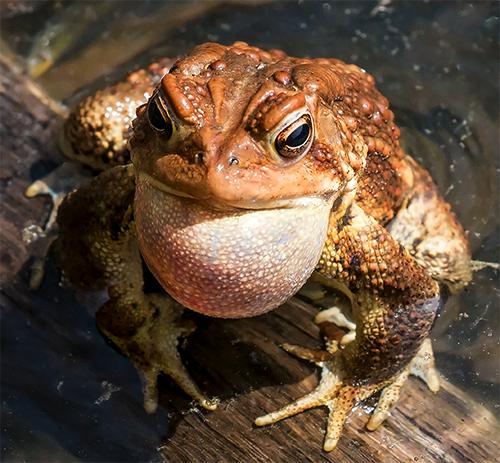
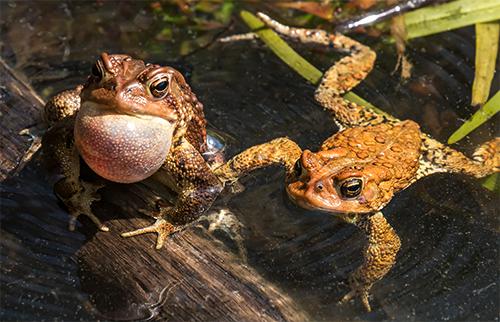
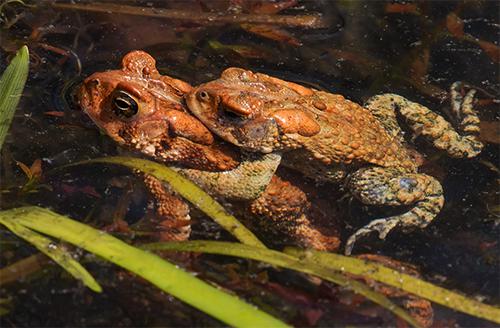
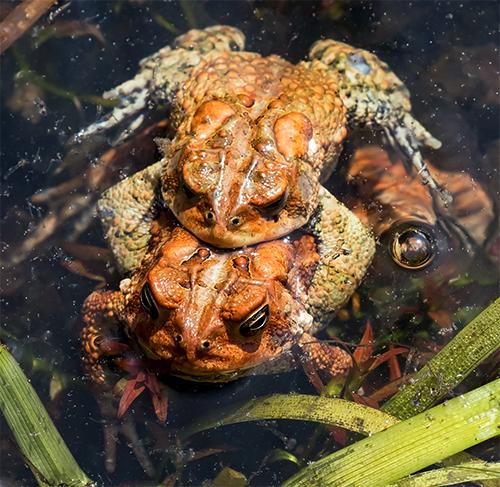
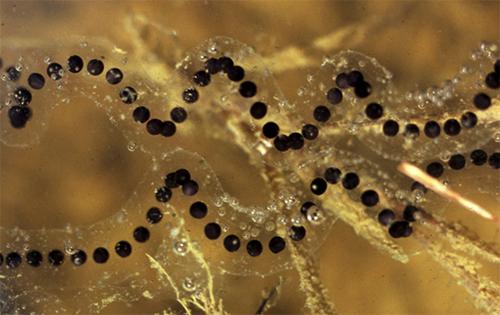
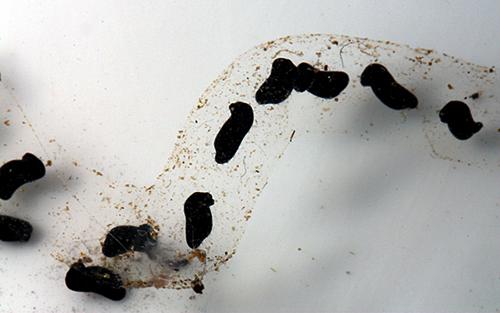
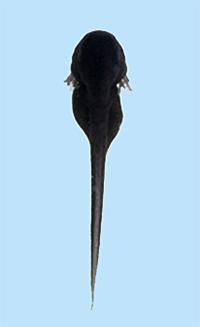



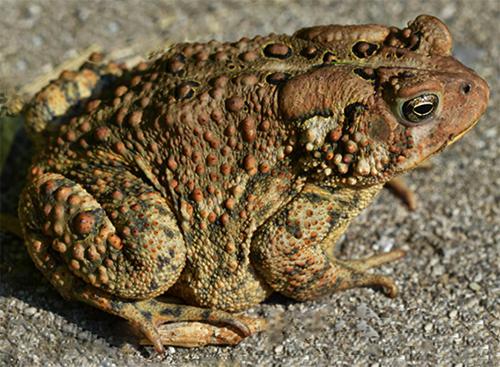




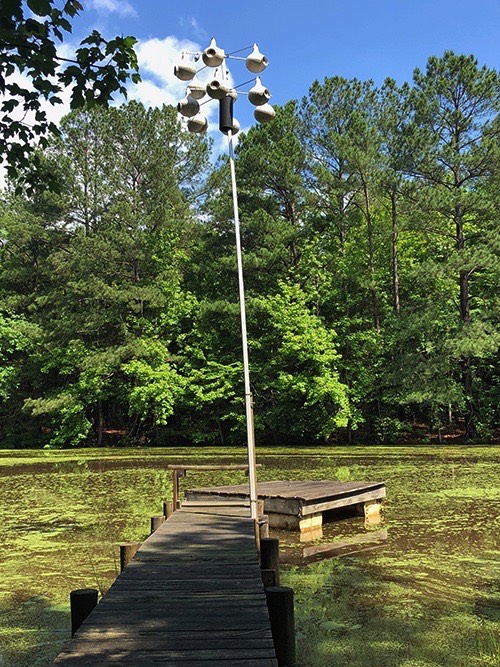
 that got knocked down by strong winds from the storm. In the distance the we could hear several gas chain saws singing in disharmony, but we're pleased to report all the power saws and yard tools we use at the
that got knocked down by strong winds from the storm. In the distance the we could hear several gas chain saws singing in disharmony, but we're pleased to report all the power saws and yard tools we use at the 
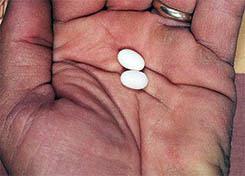 If you guessed the heavyweight female was gravid and contained a developing egg, you'd be correct. As we palpated her abdomen we could actually feel the nearly formed egg sitting just inside her cloaca. After the eggshell hardens, she will return to her nest and expel the half-inch-long egg
If you guessed the heavyweight female was gravid and contained a developing egg, you'd be correct. As we palpated her abdomen we could actually feel the nearly formed egg sitting just inside her cloaca. After the eggshell hardens, she will return to her nest and expel the half-inch-long egg 






 Please report your
Please report your